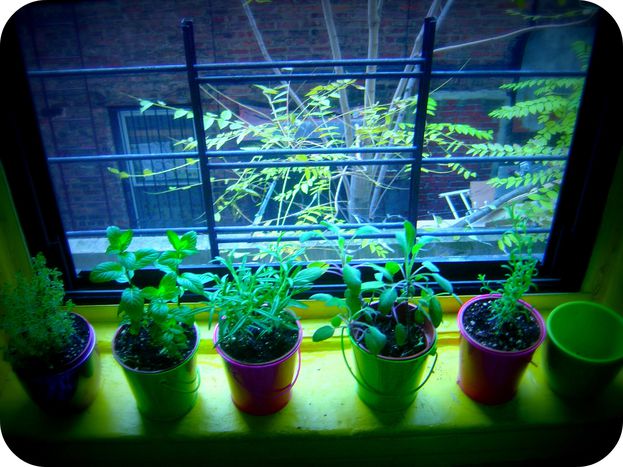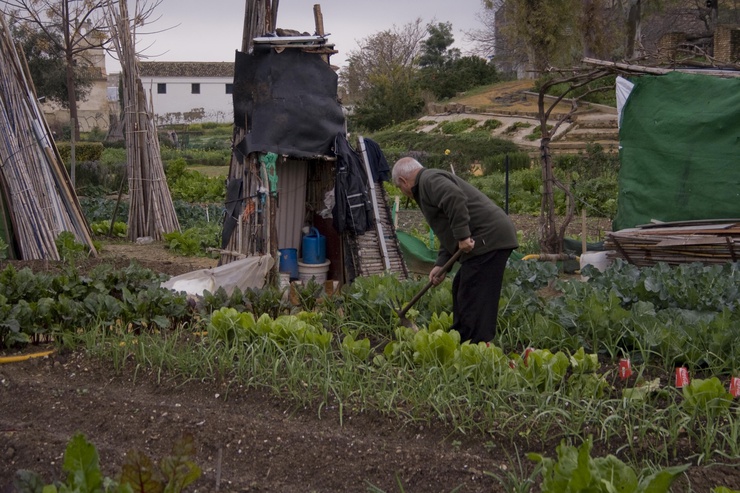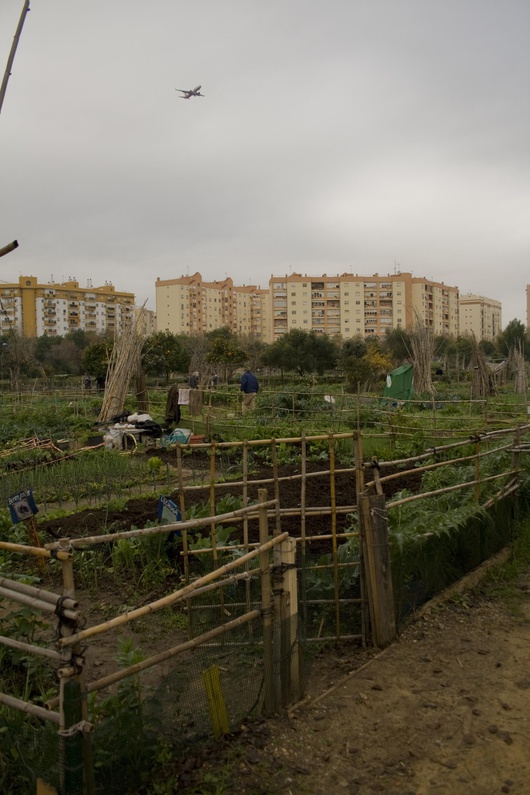
Seville: growing organic produce on Spanish asphalt
Published on
Translation by:
Cafebabel ENG (NS)There are two key conditions to urban gardening in the Spanish south: cultivating 100% organic produce without making a profit. In one of the five parks of the Andalusian capital we meet some key actors
Jose Peinado is one of the many residents of Seville who passes his time growing produce in Milaflore park (Parque de Miraflores) in the north of the city. It’s the second biggest park in Europe for its horticultural extension, and one of five in the city itself. Jose calls the daily activity ‘therapeutic. I stopped using my walking stick since I started coming here everyday,’ he adds. It’s definitely worked wonders for his health, as he has been visiting this park for twelve years now: in the summer, he is here from seven in the morning until one in the afternoon, and in the winter he comes from ten in the morning until noon.

Good for the aged
Apart from being a good way of promoting a more sustainable environment, these urban gardens celebrate an important social function too. ‘Once you’ve retired, inactivity becomes really dangerous,’ says Paco Gameso, 68. ‘Thinking about how my vegetables are doing helps keep my brain active.’ Like others around him, Paco enjoys getting his hands dirty in the earth. That is precisely one of the pillars of this initiative: an effective method of combining ecological sensibilisation and new forms of training for non-active citizens. All this is against a backdrop of valours such as civism and citizen cooperation and participation.
Massive industrialisation left no space for green zones and urban gardens became a protest to this growing construction. Miraflores park was created in 1989, explains Manuel Lara, president of the committee of the pro-educational Miraflores park association (Asociación Comité Pro-parque Educativo Miraflores). ‘The urban cores will continue to be built, destroying the agricultural zones as they go. But thanks to the perserverance of the citizens, 165 plots of land which are 150 metres squared will be preserved,’ says Lara.
Urban garden tenants
 Thanks to the spirit of this conservation, today you can see many of these characteristic spaces all over Andalusia, usually belonging to the municipality. These vegetable gardens can be bought or rented for a symbolic amount during a fixed time. At Miraflores for example a fee of 7 euros is charged at an annual rate, although one of the managers tells me that this is a voluntary donation for those who use the facilities. ‘It’s a way of reminding them that they are tenants and not the owners of this land,’ he says. The only conditions for ‘tenants’ are to use ecological products and to not sell their harvests, but use the produce for their own consumption. Other plots of land that have been abandoned are later assigned to others in strict chronological order. Miraflores gives out around ten places a year for individuals but also around eight for other sports or social organsations. It’s another way of expanding the social function which impregnates this space. Student activities are also organised here to raise awareness of the environment; primary and secondary schools have to even book their trips a year in advance.
Thanks to the spirit of this conservation, today you can see many of these characteristic spaces all over Andalusia, usually belonging to the municipality. These vegetable gardens can be bought or rented for a symbolic amount during a fixed time. At Miraflores for example a fee of 7 euros is charged at an annual rate, although one of the managers tells me that this is a voluntary donation for those who use the facilities. ‘It’s a way of reminding them that they are tenants and not the owners of this land,’ he says. The only conditions for ‘tenants’ are to use ecological products and to not sell their harvests, but use the produce for their own consumption. Other plots of land that have been abandoned are later assigned to others in strict chronological order. Miraflores gives out around ten places a year for individuals but also around eight for other sports or social organsations. It’s another way of expanding the social function which impregnates this space. Student activities are also organised here to raise awareness of the environment; primary and secondary schools have to even book their trips a year in advance.
Being a public park, Miraflores is open to everybody so vandalism and robberies can be rife. Jose Peinado is one of the few who lobbies the town hall on reinforcing the park’s security. However, the local authorities feel that these are more sporadic incidents, as only three such events have affected the 165 plots of land. There are more than just these daily problems though: newspaper reports of protests outside the town hall because park employees haven’t been paid for months (such as this one in April 2010) are just other stories which are threatening the whole system locally. Across the rest of the country, Madrid saw a new space of more than six thousand squared metres inaugurated in May, whilst Barcelona enjoys a more cosmopolitan fever for agriculture, the first garden being opened in the district of Gracia in 1986. Time has shown that cultivating crops on the Spanish asphalt is a utopia no more.
This article is part of cafebabel.com’s 2010-2011 feature focus on Green Europe; read the full set of city special editions
Images: main CocteauBoy/ Flickr; in-text © Silvia López
Translated from Cultivar en el asfalto: Huertos urbanos en Sevilla



